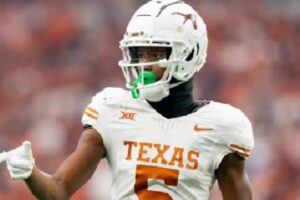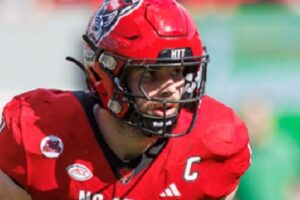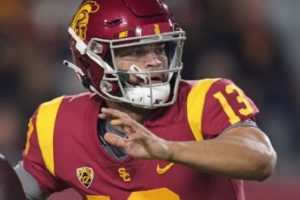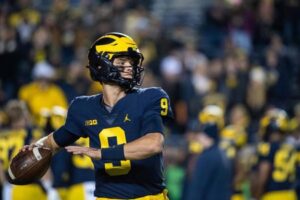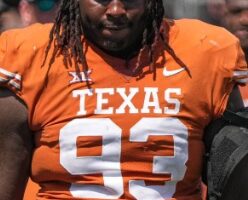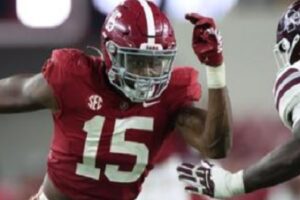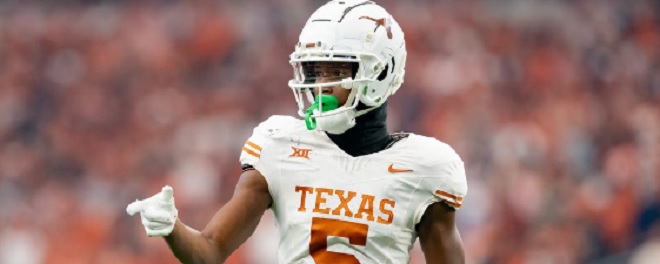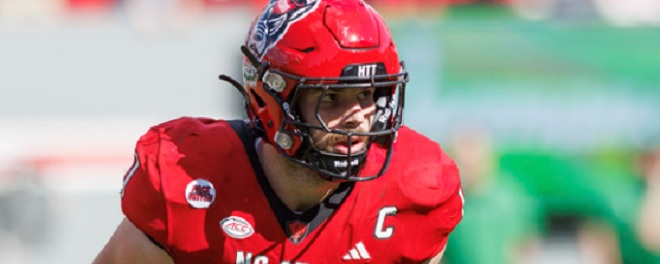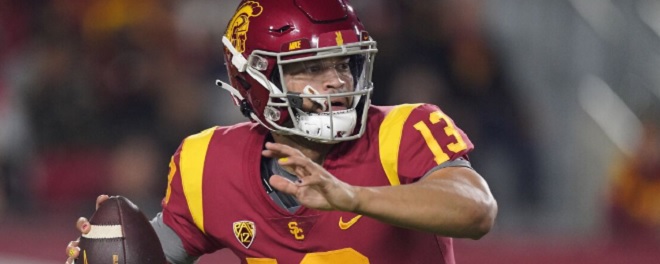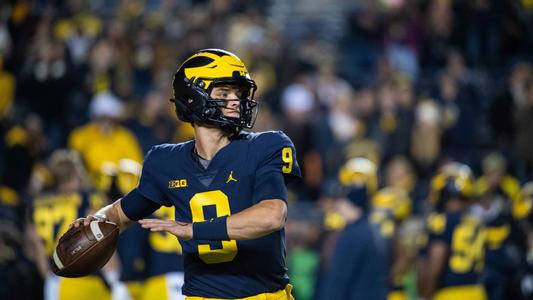By Charlie Campbell.
Send Charlie an e-mail here: [email protected]
Follow Charlie on Twitter @draftcampbell for updates.
This page was last updated March 26, 2013. Follow me @walterfootball for updates.
Position Review: Defensive Tackles
Defensive Tackle Class
Early-round talent: A+
Mid-round: B+
Late-round: B-
Overall grade: A
2012 prospects vs 2013
Fletcher Cox < Sharrif Floyd
Michael Brockers < Star Lotulelei
Dontari Poe < Sheldon Richardson
Derek Wolfe < John Jenkins
Kendell Reyes < Kawann Short
Jerel Worthy > Sylvester Williams
Devon Still < Johnathan Hankins
Mike Martin < Jesse Williams
This is one of the few positions where the 2013 class is stronger than that of the 2012 NFL Draft, and that is saying something because the 2012 class was a solid year for defensive tackles. In the comparison of similar prospects, only Packers defensive tackle Jerel Worthy was better than his 2013 counterpart. The 2013 NFL Draft is loaded at defensive tackle.
If you were to mix the classes, Cox would go behind Floyd and Lotulelei, but would grade about equal to Richardson. Brockers would go behind those four.
Poe, Wolfe, Reyes, Worthy and Still would all go behind Short. Poe would be about equal to Sylvester Wiliams. Wolfe, Reyes, Worthy and Still would grade out about equal to Hankins and in front of Jesse Williams. Other draft analysts would disagree and put Jesse Williams higher than those players. Mike Martin would be behind Williams.
The Chiefs were the first team to take a tackle last year when they selected Poe with the 11th-overall pick. Even though Jenkins probably won’t go as high as Poe, Jenkins is a better nose tackle prospect in my opinion. Poe might beat Jenkins in the Combine underwear olympics, but Jenkins is a better football player. He produced more in college against the highest level of competition.
The 2013 NFL Draft class could have six to eight defensive tackles go in the first round. After these eight, there are some other quality tackles who could be had on the second day and into the third day. That group includes Missouri Southern’s Brandon Williams, LSU’s Bennie Logan, Illinois’ Akeem Spence and Penn State’s Jordan Hill.
Safest Pick: Star Lotulelei, Utah

Lotulelei can do anything a defensive coordinator asks him. He can play 4-3 nose tackle or be a three-technique pass-rusher. Lotulelei could play end or nose tackle in a 3-4 defense. That fleixibility is extremely rare in a defensive tackle.
Lotulelei has power, explosiveness, speed and a good motor. WalterFootball.com has heard that he has good character off the field and is a hard worker. It is hard to see Lotulelei not panning out. He seems very safe to turn into a good NFL defensive lineman in any scheme he is drafted into.
Biggest Bust Potential: Jesse Williams, Alabama

This was a tough choice because no player looks like a definite bust, but Williams is the most limited prospect in my opinion. He could be standing on the sideline a lot in the NFL while the rest of his defensive teammates are on the field. The passing-obsessed league doesn’t need run-stuffers like it used to and Williams offers next to nothing as a pass-rusher.
In speaking with a few scouts, they agreed with me on the lack of pass rush. They also said that Williams was top heavy with thin legs. He was tight athletically. They said Williams was supposed to be a two-gap nose tackle and while he could whip a single-blocker, double-teams gave him a lot of problems. Two-gap tackles are designed to take on double-teams and hold their ground. Scouts question if Williams can hold up against doubles in the NFL. Of these defensive tackles, I could see him being the one NFL offensive linemen figure out.
Defensive Tackle Rankings by Attributes
Pass Rush:
NFL prototype: J.J. Watt, Texans
- Kawann Short
- Sheldon Richardson
- Sharrif Floyd
- Star Lotulelei
- Sylvester Williams
- John Jenkins
- Johnathan Hankins
- Jesse Williams
Recap: The NFL is always searching for interior linemen who can get after the quarterback. They are a hard commodity to find, and one can make a massive impact on a teams’ ability to rush the passer. Tackles who can rush the quarterback set up a lot of sacks for edge-rushers via disruption and double-teams. The fastest way to get to a signal-caller is from the middle.
Not only does Short have the biggest sack total of this group with seven in 2012, he was very consistent with 20 total sacks over the past three seasons. That is a real accomplishment in a run-heavy conference like the Big Ten. Short has speed, strength and moves. His pass rushing is his best attribute.
Richardson is a very good pass-rusher as well. He beats linemen with explosive speed and a relentless motor. Richardson also has versatility as he recorded sacks from defensive end and tackle. He is very disruptive and causes a lot of havoc.
Floyd had only three sacks in 2012, but he also is a good pass-rusher. Floyd applied consistent pressure on the quarterback throughout the season and was very disruptive. In the NFL, he should be a fine interior rusher and probably will produce bigger sack totals as a pro.
Lotulelei is a good pass-rusher who is better than his total indicates (five sacks). He was constantly double- and triple-teamed just to get draws. When Lotulelei was single-blocked, he destroyed linemen and put heat on the quarterback. Lotulelei also beat double-teams to get pressure.
Sylvester Williams can be a dangerous pass-rusher, but is more streaky. When Williams is on his game, he does a superb job of collapsing the pocket. Williams had six sacks as a senior, but 4.5 of them came against Elon, East Carolina and Idaho. He has to become more consistent.
Jenkins showed his potential in the SEC Championship Game when he beat Alabama guard Chance Warmack for a sack. At the Senior Bowl, Jenkins’ bull rush was deadly. He helped create a lot of sacks the past two seasons by charging down the middle and forcing the quarterback out of the pocket.
Hankins flashed some pass rush at times, but was too inconsistent. He needs to improve his repertoire of moves. Hankins can be disruptive, but rarely gets to the quarterback and had only one sack in 2012.
As stated above, Jesse Williams offers little to nothing as a pass-rusher. He’ll probably be pulled off the field in the NFL during passing situations.
Run Defense:
NFL prototype: Haloti Ngata, Ravens
- Star Lotulelei
- Sheldon Richardson
- John Jenkins
- Johnathan Hankins
- Jesse Williams
- Sharrif Floyd
- Kawann Short
- Sylvester Williams
Recap: Lotulelei is an excellent run-defender. He is extremely strong at the point of attack and stuffs runs that come his direction. Lotulelei regularly beat double-teams in 2012 to make tackles close to the line of scrimmage. He also has the speed to make plays out of his gap. Lotulelei is very fast in pursuit and can chase down backs. He also will bust into the backfield to make a tackle for a loss. The senior is very good in short-yardage situations as well.
While other tackles are stronger and more stout at the point of attack, Richardson (6-3, 294) is superb at defending the run. He had 75 tackles in 2012; a staggering number for a defensive tackle.
Richardson is very fast and has a great motor. Those combine to make him a great run-defender in pursuit. He often caused havoc and blew up runs by firing into the backfield. If Richardson adds more strength to improve when runs come straight at him, he could be one of the better defensive line run defenders in the NFL.
Jenkins (6-4, 359), Hankins (6-3, 320) and Jesse Williams (6-3, 323) are tough to move at the point of attack. They fill their gap and stuff running lanes on the inside. Jenkins and Hankins have enough speed to make plays outside of their gap. They also do a better job against double-teams than Jesse Williams, thus he ranks behind them.
Floyd is a good run-defender and is tough at the point of attack. He played a critical role in Florida having a good run defense in 2012. The disruptive Floyd causes havoc by firing into the backfield to blow up runs and set up his teammates for tackles.
Short (6-3, 308) is better at trying to get up field and make tackles behind the line rather than holding his ground with runs going directly at him. His run defense wore down at times, but that wasn’t all his fault as Purdue’s defense struggled to get off the field in 2012.
Sylvester Williams is the worst run-defender of this class and had the fewest tackles for the 4-3 tackles; only Jesse Williams had fewer. Sylvester Williams (6-3, 313) was streaky as he had good run defense at times and was quiet in others. Sylvester Williams should be better at defending the run than he is.
Motor:
NFL prototype: J.J. Watt, Texans
- Sheldon Richardson
- Sharrif Floyd
- Star Lotulelei
- Jesse Williams
- Johnathan Hankins
- Kawann Short
- John Jenkins
- Sylvester Williams
Recap: Richardson is utterly relentless. The guy gives 100 percent on every play and never takes snaps off. There were plays last season when he was getting in on tackles on wide receivers 20 yards past the line of scrimmage. Richardson just doesn’t quit until the whistle is silenced. With the possible exception of Georgia outside linebacker Jarvis Jones, no front seven defender in the 2013 NFL Draft displays hustle as much as Richardson. It is truly impressive.
Lotulelei and Floyd have great motors as well. They both pursue plays outside of their gap and have the speed to make it matter. Lotulelei’s motor sometimes gets disguised because he’s holding his ground while fighting multiple blockers.
Jesse Williams has a good motor; you don’t see him dogging it. Short is similar, but as stated above, he can wear down at times.
Hankins doesn’t have a bad motor, but it doesn’t wow you either. Jenkins gives good effort. Sylvester Williams looks like he takes some plays off. He can fall quiet for stretches.
Speed:
NFL prototype: Gerald McCoy, Buccaneers
- Sharrif Floyd
- Sheldon Richardson
- Star Lotulelei
- Sylvester Williams
- Kawann Short
- John Jenkins
- Johnathan Hankins
- Jesse Williams
Recap: This was a tough choice between Lotulelei, Richardson and Floyd. All three are extremely fast. That being said, Floyd is the most explosive off the snap, so he gets ranked first. Richardson and Lotulelei aren’t far behind. In the open field, Richardson and Floyd are faster in pursuit, but all three are explosive and extremely fast.
Sylvester Williams and Short are virtually tied for fourth. They both have good speed off the snap and in pursuit. Neither is significantly outside the top three.
Jenkins has deceptive speed. He showed that at the Senior Bowl with how he got into the pocket in the pass-rushing one-on-ones. Jenkins has some surprising explosiveness for such a large defensive tackle. He can close in short areas and would probably be faster if he dropped 10-20 pounds.
Hankins flashes speed as well, but isn’t as quick as the other tackles. Size and power are his strengths. Improving his get-off would make a big difference for Hankins.
Jesse Williams has the reputation of a workout warrior, but that doesn’t translate to him being a fast defender on the field. He isn’t a threat to get to the ball when it doesn’t come directly to him.
Strength:
NFL prototype: Ndamukong Suh, Lions
- John Jenkins
- Jesse Williams
- Star Lotulelei
- Johnathan Hankins
- Sharrif Floyd
- Sheldon Richardson
- Sylvester Williams
- Kawann Short
Recap: The top three are all every equal. Jenkins, Lotulelei and Jesse Williams are all extremely powerful defenders. Jenkins and Lotulelei are the top two because they have the strength to grab offensive linemen and toss them to the ground like rag dolls. Jesse Williams has power, but doesn’t throw linemen around like Jenkins and Lotulelei.
Hankins is very strong as well. Offensive linemen can’t push him around, and he could get better if he improves his ability to shed blocks. Floyd has deceptive strength for a speedy tackle. He holds his ground well and pushes offensive linemen around.
Richardson is the lightest of any of these tackles, yet he did well at the Combine bench press. Richardson could use more power and needs to get stronger to defend runs that come straight at him.
Sylvester Williams flashes some strength with shedding and bull rushing, but it isn’t consistent enough. Short is similar to Sylvester Williams, but a notch below since he is smaller.
3-4 Defensive End:
NFL prototype: Haloti Ngata, Ravens
- Star Lotulelei
- Sheldon Richardson
- Sharrif Floyd
- Johnathan Hankins
- John Jenkins
- Jesse Williams
- Sylvester Williams
- Kawann Short
Recap: This group has some excellent potential for edge-defenders who could be five techniques in a 3-4 defense. Many 3-4 teams look for players who can move inside to defensive tackle on passing downs.
Lotulelei has the power, speed and length to be a force as a 3-4 end. Richardson has some natural abilities that 3-4 defenses look for with his speed, length and versatility.
Floyd played a lot of 3-4 end as a sophomore, so he has experience going against tackles. His speed and ability to get upfield make him a candidate for the 3-4 in the NFL.
Hankins, Jenkins and Jesse Williams have the size, strength and length to play on the edge. They all could fit well in a 3-4 defense because they could play multiple positions on the line.
Sylvester Williams and Short are 4-3 tackles. Going against tackles isn’t their strong suit and it would be new compared to what they played in college.
Three-Technique:
NFL prototype: Geno Atkins, Bengals
- Sharrif Floyd
- Sheldon Richardson
- Star Lotulelei
- Kawann Short
- Sylvester Williams
- Johnathan Hankins
- Jesse Williams
- John Jenkins
Recap: Good three-techniques are generally hard to find, but this draft class has a bunch of them. The top five above have all shown the ability to be skilled three-techniques.
Floyd’s speed, explosiveness and motor give him the top spot. He is a natural three-technique who has a game that flashes similarities to Geno Atkins, Warren Sapp and John Randle. If Florida had let Floyd play more three-technique, his sack total would have been higher, but the Gators moved him around the line.
Richardson is just a hair below. He is a good three-technique given the way he can fire into the gap off the guard’s outside shoulder. The speedy Richardson is disruptive and that is what a three-technique needs to do more than anything else.
Lotulelei can do anything under the sun; the three-technique is just another position to check off. His speed and power make him dangerous as a three-technique rusher.
Short has played three-technique for years at Purdue and is excellent at it. Sylvester Williams has experience and was effective playing it for North Carolina.
Hankins played the position somewhat, but not very much. He is more of a natural 4-3 nose tackle than a speedy gap-shooter. Same with Jesse Williams and Jenkins. All of these three are bigger defenders who play a different style.
3-4 Nose Tackle:
NFL prototype: Vince Wilfork, Patriots
- John Jenkins
- Jesse Williams
- Johnathan Hankins
- Star Lotulelei
- Sharrif Floyd
- Sheldon Richardson
- Sylvester Williams
- Kawann Short
Recap: A good nose tackle in a 3-4 defense is a tough commodity to find. They set the tone for the pass rush and run defense by blasting the center into the backfield. An effective zero-technique stuffs the run and occupies interior blockers to open up lanes for blitzes up the middle.
Jenkins and Jesse Williams have each played nose tackle for years and both are very skilled at it. Jenkins showed the ability at the Senior Bowl to dominate as a nose tackle. He is a natural 3-4 nose tackle in the NFL. Williams’ best position would be as a zero-technique in a 3-4 set.
Hankins and Lotulelei both hail from 4-3 sets, but each has the size and strength to play 3-4 nose tackle in the NFL. Both players are versatile enough to adapt to it.
Floyd and Richardson could maybe play 3-4 nose tackle if a team wanted a smaller, speedy version like the Cowboys’ Jay Ratliff. Sylvester Williams and Short are misfit as 3-4 ends. Sylvester Williams has more size to help him pull it off if he had to.
|
|
2024 NFL Mock Draft - April 23
NFL Power Rankings - Feb. 22
Fantasy Football Rankings - Feb. 19
NFL Picks - Feb. 12

